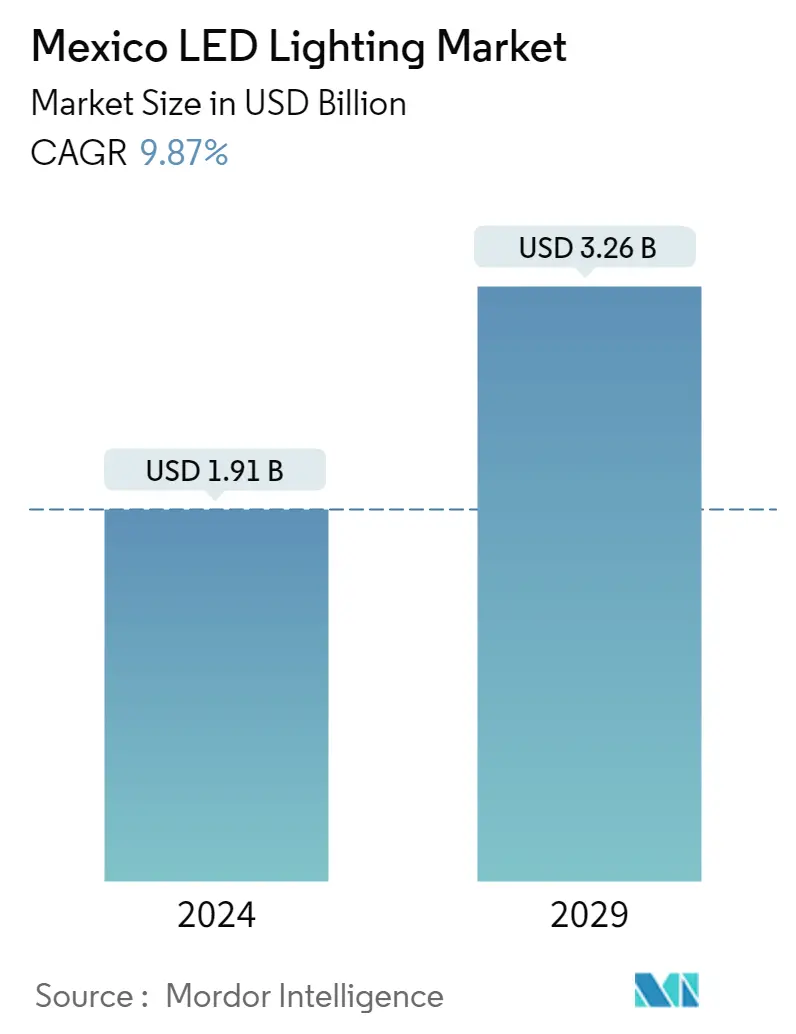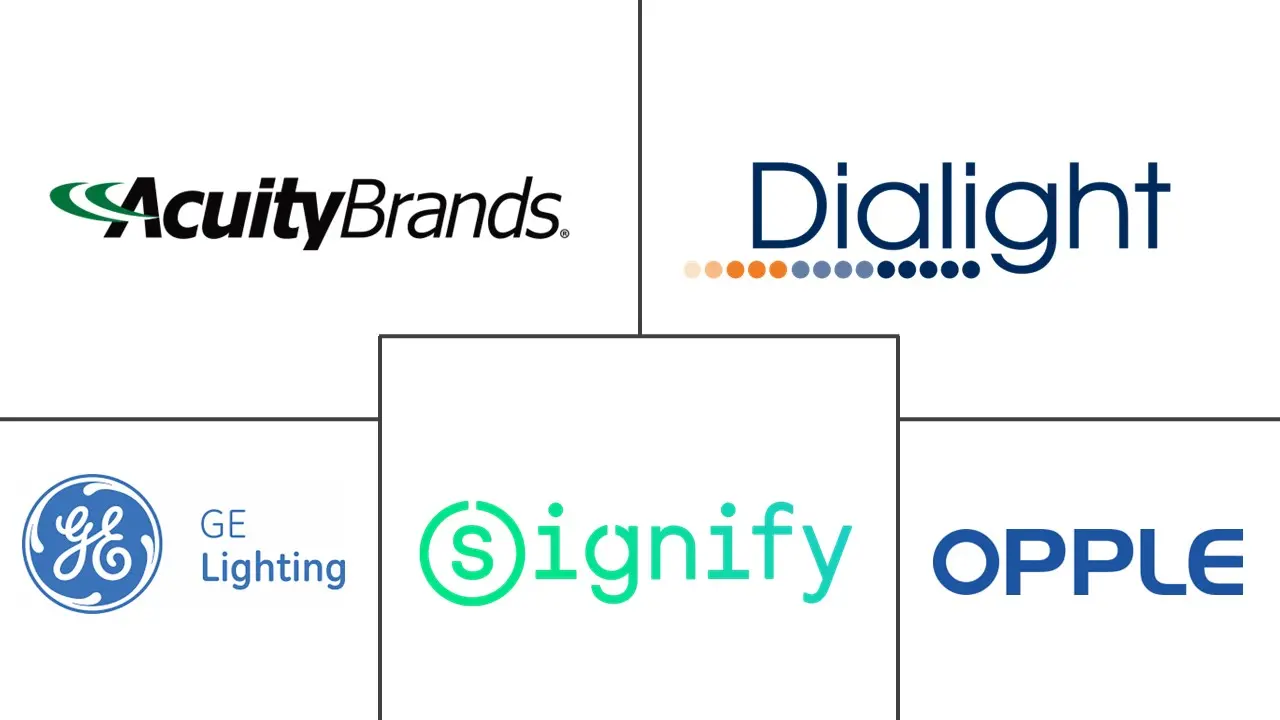Market Size of Mexico LED Lighting Industry

| Study Period | 2019 - 2029 |
| Base Year For Estimation | 2023 |
| Market Size (2024) | USD 1.91 Billion |
| Market Size (2029) | USD 3.26 Billion |
| CAGR (2024 - 2029) | 9.87 % |
| Market Concentration | Medium |
Major Players
*Disclaimer: Major Players sorted in no particular order |
Need a report that reflects how COVID-19 has impacted this market and its growth?
Mexico LED Lighting Market Analysis
The Mexico LED Lighting Market size is estimated at USD 1.91 billion in 2024, and is expected to reach USD 3.26 billion by 2029, growing at a CAGR of 9.87% during the forecast period (2024-2029).
The studied market is anticipated to witness robust growth owing to several factors like industrial development, increasing disposable incomes, government initiatives & policies, technological advancements, and the rise in demand for smart lighting solutions.
- The market studied is also driven by many factors, such as improved manufacturing efficiency, resulting in lower prices, improved LED efficacy in recent years, and suitable design of LED lamps and retrofit kits, which can directly replace the existing halogen, incandescent, and fluorescent lights. They also have a longer lifespan, meaning users don't need to replace them as frequently as other lighting systems. This reduces the requirement for frequent maintenance and replacement expenses. LED lights are environmentally friendly, as they do not contain any toxic chemicals and can be recycled. They are also very durable and can withstand harsh weather conditions, making them suitable for indoor and outdoor use.
- Street lighting accounts for a considerable portion of electricity usage in the region and, thus, a substantial part of cities' budgets. The Mexican government has introduced the National Project for Energy Efficiency and Public Municipal Lighting (PNEEAPM) to aid various cities in tackling this issue. This program offers extensive technical support to cities undertaking LED public lighting initiatives. The Government of Mexico has enforced two efficiency performance standards for LED lamps: general lighting and luminaires for roads and outdoor spaces. These standards apply to at least 450,000 lamps and fixtures deployed each year.
- In January 2022, a significant milestone in a partnership between the UC Davis California Lighting Technology Center and the Universidad Autónoma de Guadalajara was reached with the opening of a lighting technology & research center in Mexico. The Centro de Tecnología en Iluminación in Guadalajara would address growing climate change concerns through research and collaborations dedicated to developing clean energy and sustainability solutions across Mexico. Such developments would offer a significant boost to the growth of the studied market.
- The LED adoption rate has risen with the rapid increase in sustainable green building initiatives, primarily due to environmental concerns and the increasing penetration of technology in consumers' day-to-day lives. The growing trend of integrating technology with smart lighting systems has also been gaining momentum.
- Furthermore, LED lights are progressively being employed in diverse environments such as governmental towers, medical facilities, sports arenas, commercial complexes, educational establishments, aviation hubs, railway stations, theaters, and numerous other locations owing to their advantageous attributes, namely superior energy efficiency, extended longevity, adaptability and resilience, and eco-friendliness.
- In smart lighting solutions, the vendors in the market are expected to focus on developing robust connectivity solutions, owing to which connectivity solutions, such as Wi-Fi, Zigbee, and Bluetooth, are gaining traction in the smart LED market. Lighting sensors provide benefits like low energy usage and cost savings. The sensors measure ambient conditions and adjust their brightness accordingly. This feature offers on-demand lighting while avoiding washout with sunlight. It is used in remotely managed dimmers. Such advancements are likely to aid the growth of the studied market.
- However, the high initial costs of LED lighting solutions, limited awareness & adoption of smart lighting solutions, and infrastructure limitations are likely to restrain the growth of the studied market.
- Additionally, the conflict between Russia and Ukraine will significantly impact the electronics industry. The conflict has already exacerbated the semiconductor supply chain issues and the chip shortage that have affected the industry for some time. The disruption in the supply chain also caused volatile pricing for critical raw materials such as nickel, palladium, copper, titanium, aluminum, and iron ore, resulting in material shortages. This would hamper the production of lighting products.
